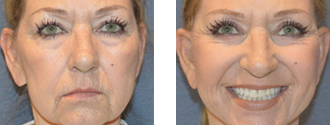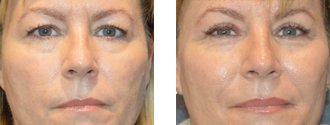Hair Transplant Beverly Hills
Jump To
Dr. Attenello is a double-board certified, fellowship-trained hair restoration specialist in Beverly Hills. Her approach to hair restoration and hair transplantation is one that is truly unique and customized. She values the individuality of each patient and their aesthetic goals. Because she is fully invested in each patient and their result, she does not believe in doing multiple patients a day and, instead, focuses on each one with her undivided attention.
For Dr. Attenello, hair transplantation is one of the most rewarding procedures for both the surgeon and patient given the excellent results combined with the minimal downtime. As one of the very few female hair surgeons, she provides a novel perspective that exemplifies the most natural appearing results. She will customize a treatment plan specifically for you that can include both surgical and non-surgical treatments. Call 310-871-9599 to schedule a hair transplantation in Beverly Hills and visit our patient resources page for more information.
What causes baldness or hair loss?
There are many causes of hair loss, but the one type that leads to permanent hair thinning or hair loss is called androgenetic alopecia. The reason that male or female pattern baldness occurs is because there is an increase in a certain hormone called dihydrotestosterone (DHT). It has been shown that this hormone causes the hair follicle to become a miniature version of itself, or go through ‘miniaturization’ – essentially, a hair follicle that is thinner, less pigmented, and less deeply rooted. Ultimately, this leads to permanent hair loss. Oftentimes, the hair thinning process continues and the balding area expands until the hair just stops growing altogether.
What is a hair transplantation?
Hair transplantation is essentially transferring follicles of hair from one part of the scalp to a more desired part of the scalp. It is not growing ‘new’ hair, but instead rearranging the hair that one currently has – to give the perception of fuller, more dense hair.
Hair transplantation is truly the marriage of art and science. In the past when the more traditional ‘plugs’ were used, the results were crude and unbalanced. This was where surgeons transplanted big groups of hairs together in bunches which did not appear natural. Today, the technique has become much more refined where Dr. Attenello is able to transplant single follicular units and individual hairs to the desired area, therefore mimicking exactly how our hairs naturally grow. View Dr. Attenello’s hair restoration before and after photos.
Moreover, though, the surgeon must have a natural, aesthetic sense in order to transplant the hairs in the correct direction, angle, and depth so they flow seamlessly with the native hairs and provide a much more natural appearance. Additionally, the design of the hair transplant and the level of the hairline is of the utmost importance to not only look natural today, but also in the future if hair loss progresses. Dr. Attenello feels that oftentimes this cannot necessarily be taught, but instead, instinctive of the surgeon.
Are hair transplants permanent?
Yes! Because the donor hair is taken from certain areas of the back and sides of your head, these hairs are not sensitive to the effects of dihydrotestosterone (DHT) that causes the balding process. Even though the hairs are transplanted to a different region of the scalp, they still retain the same genetic characteristics and therefore will continue to grow permanently for the rest of your life.
How are the hairs transplanted?
Once the hairs are harvested from the donor area, they are then transplanted into the desired areas. Most men and women lose their hair from the front and top of the scalp. Therefore, it is the more permanent hairs from the back and sides of the head that are harvested and then transplanted.
Dr. Attenello uses very small, fine instruments to create tiny incisions where each hair is then transplanted into. The angle, direction, density, and depth of the incisions are all paramount in providing the most natural result.
The transplanted hairs quickly become ‘rooted’ into the scalp, and after a short resting period of a few months, they begin to grow permanently for the rest of your life. These hairs can be styled, washed, and cut just as your own native hairs.
Once the recipient sites are created by Dr. Natalie Attenello, the hairs are carefully implanted into each site permanently.
How long does a hair transplant take?
This truly varies depending on the number of hairs being transplanted as well as how the hairs are harvested (the ‘strip’ method versus FUE). Usually, smaller cases take half a day and longer cases that involve more areas of the scalp or face to be transplanted can take the full day. Either way, patients are usually kept very comfortable, with the option to relax and sleep, listen to music, or watch television or movies on one of our flat screens mounted in the procedure room.
What is the Follicular Unit Transplantation (FUT)/strip procedure?
The ‘strip’ procedure involves taking a thin strip of donor hair from the back of the head. Using high powered stereomicroscopes, the donor hair is then very finely dissected and meticulously trimmed into individual follicular units. This innovation was pivotal in evolving away from the ‘plug’ look to the more refined, individual hair transplantation. The area in the back where the scar was obtained is then closed with precise surgical technique to provide a scar that is barely perceptible.
Each hair follicle is meticulously slivered using high-powered stereomicroscopes.
What does the FUT/strip scar look like?
After the strip procedure, there are no gaps or bald areas, and the patient’s normal hair conceals the scar nicely. With meticulous surgical technique, the scar is truly hidden and inconsequential.
Dr. Natalie Attenello performs both F.U.E. as well as the ‘strip’ method. Here is a result from her patient with the ‘strip’ method. With meticulous surgical technique, the scar should barely be perceptible.
Do I have to shave my head for the FUT/strip procedure?
For the strip procedure, you do not have to shave your head. Instead, we recommend keeping it on the relatively longer side to help conceal the sutures while they are healing.
What is Follicular Unit Extraction (FUE)?
Follicular Unit Extraction, or more commonly referred to as FUE, is where the follicular units that are naturally grouped together are ‘extracted’ individually using a very small, fine punch. The size of the punch truly depends on the patient’s anatomy, but usually are 1 mm in diameter or less. This technique is favored by those patients who like the flexibility of wearing their hair shorter (i.e. at a hair length less than half an inch, where a linear scar may be visible).
Dr. Attenello uses state of the art FUE technology in combination with very high-powered magnification surgical glasses to extract each individual hair safely and with as minimal trauma possible.
Do I have to shave the back of my head for the FUE procedure?
Usually for the FUE procedure, you do have to shave the area where the hairs are going to be extracted from. This gives Dr. Attenello the ability to clearly see each individual hair follicle to extract them as precisely as possible. In some of the smaller cases, we may be able to do the FUE without shaving the entire donor area.
Who is a good candidate for FUE?
Most patients are candidates for FUE, but especially for patients with a certain anatomy or specific goals. These patients include:
- Patients who want the flexibility of wearing their hair short
- Patients who have had prior ‘strip’ procedures before and have a very tight scalp
- Patients who do not want a fine, linear scar
- Patients with less-than-ideal donor hair density
Contact Dr. Attenello to schedule a hair transplant consultation in Beverly Hills today.
Do I have a scar with FUE?
Because the scar with FUE is so tiny, there is no need for sutures or staples. Instead, the tiny areas where the hairs were extracted naturally heal and close on their own within a matter of days to a week. Instead of a fine linear scar like the ‘strip’ procedure, FUE has many, small circular scars (all less than a 1mm) that are scattered over the back of your head. If you did choose to shave your head entirely, then the tiny scars do become visible and using a very short guard, your donor area may look patchy. But, overall, patients with the FUE technique can enjoy the flexibility of wearing their hair shorter than with the ‘strip’ procedure.
How long does FUE take to heal?
Both the strip procedure and FUE heal very well and relatively fast. For FUE, the donor area in the back usually heals between three and seven days. This is when the tiny extraction sites start to close and your remaining donor hair in the area continues to grow over the area.
What are the risks or side effects of a hair transplant?
Because the hair transplant procedure exclusively deals with the outer most layer of the body, risks or side effects are extremely rare. All patients are given a prescription for pain medication as well as antibiotics, but even infections are fortunately extremely rare with this procedure.
Are hair transplants painful?
Every patient’s level of pain varies, but overall, hair transplant procedures are very well tolerated with mild pain and discomfort. All patients are given a prescription for pain medication for home, but many don’t find the need to use it for very long.
What type of anesthesia is used during a hair transplant?
One of the advantages of hair transplants is that it does not require general anesthesia. It is most similar to a dental procedure, where local anesthesia is used initially to get the areas anesthetized prior to starting the procedure.
Is there any swelling or bruising after a hair transplant?
Hair transplant procedures rarely have bruising, and swelling is usually modest as well. If the area of transplant is the frontal hairline, some patients may experience mild swelling that migrates inferiorly, but this is not that common.
What can I expect in the recovery period after a hair transplant?
After surgery, a light cap can be worn and detailed instructions are given. Mild redness and crusting can be expected where the hair grafts were placed, and this usually resolves after a week or two. Depending on your comfort level of this and where your grafts were, many patients can return to work and social activity after a few days. Though, we advise against certain activities such as heavy lifting and smoking.









